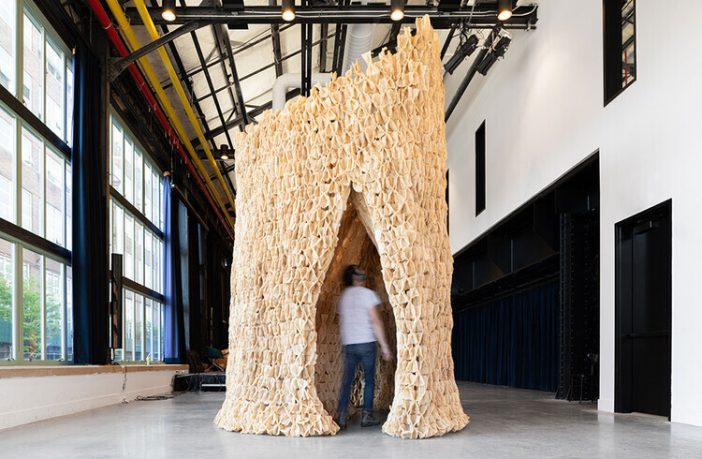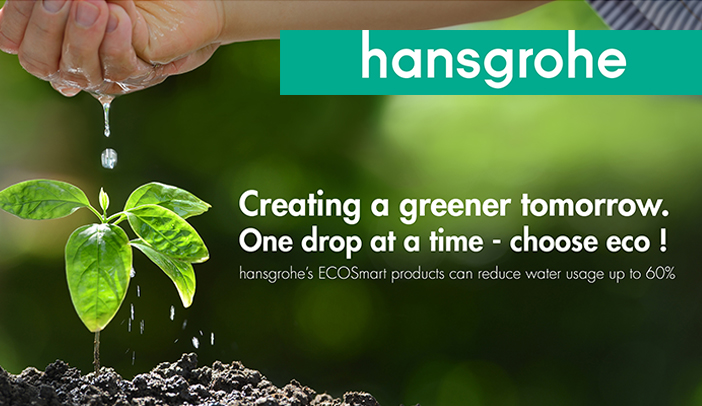- Advances in biotechnology and material science are opening new material opportunities, with the potential of fundamentally changing the connection between the built environment and the natural world.
- Building materials and construction account for 11% of greenhouse gas emissions.
- The AEC industry can contribute to curbing climate change in the following years, and the re-evaluation of commonplace building materials is one of the most critical steps.
- Bioengineered materials, which grow, produce energy, self-heal, are the next frontier in biology and material science and potentially a path towards a new kind of architecture.
- Although innovation in these fields is still far away from mainstream commercial use, it promises to dramatically change the image of the built environment.
Living materials for the built environment is a rapidly expanding area of inquiry, serving a wide array of objectives, from reducing carbon footprints, optimizing the use of resources, developing innovative properties to enhancing carbon sequestration. Sitting at the intersection of design, material science, chemistry, and bioengineering, living building materials (LBMs) contain microorganisms and show biological properties. The following research showcases how LBMs could change the material with which architecture operates.
Replacing Traditional Production with Organic Growth
At the University of Colorado Boulder, the Living Materials Laboratory investigated a new cement-free living building material that, unlike concrete, is entirely recyclable. The team used cyanobacteria, green microorganisms similar to algae that use CO2 and sunlight to grow, and manufactured a bio cement that helps sequester CO2. Harnessing the exponential growth of bacteria, the researchers grew the building blocks, demonstrating a new potential manufacturing method. The real-life application of this technology is already here, as some companies are pushing forward the adoption of these enhanced materials by incorporating biocement in their products, for example.
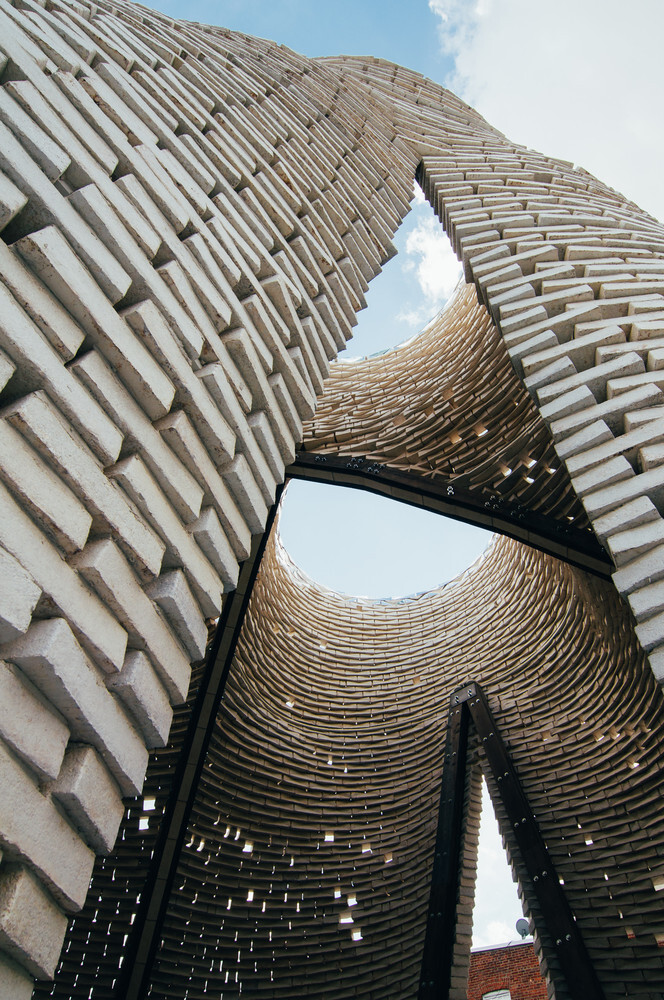
‘Hy-Fi’ deisgned by The Living. Image © Andrew Nunes
Mycelium is another prolific area of inquiry for construction materials that can be grown, as materials based on mycelium have good insulation properties, are fire retardants and don’t produce toxic gasses. In 2014, The Living created Hy-Fi, the first large scale structure made of mycelium bricks, which could be grown in 5 days. At NASA, mycelium-based materials are investigated as a viable option for space architecture, precisely for the potential of growing them on-site, in a context where the volume of materials transported needs to be reduced to a minimum.
Self-repairing materials for less resource consumption
With concrete responsible for almost 9% of global carbon emissions, numerous research endeavours focus on finding alternatives to traditional concrete, rethinking its production process or finding solutions for decreasing the demand. At the Worcester Polytechnic Institute, researchers have developed a self-healing concrete, using an enzyme that transforms carbon dioxide in the atmosphere into calcium carbonate crystals, sealing millimetre-scale cracks and preventing further damage to the material. Unlike the experiments with self-healing concrete using bacteria, this process is faster and doesn’t pose any safety issues.
Real-life testing and architectural applications
The Hub for Biotechnology in the Built Environment is a research project bringing together bio-scientists from Northumbria University and architects, designers and engineers from Newcastle University working to develop biotechnologies that would help create buildings responsive to their environment. The research focuses on producing living engineered materials that would metabolize their waste, help reduce pollution, make construction processes more efficient and even generate energy. To test the findings at building scale, the research initiative built an experimental structure within the Newcastle University campus that would help replicate a domestic space. Within OME, researchers will experiment with materials, develop processes to convert household waste into heat and energy, test new façade systems and influence the building’s microbiome.
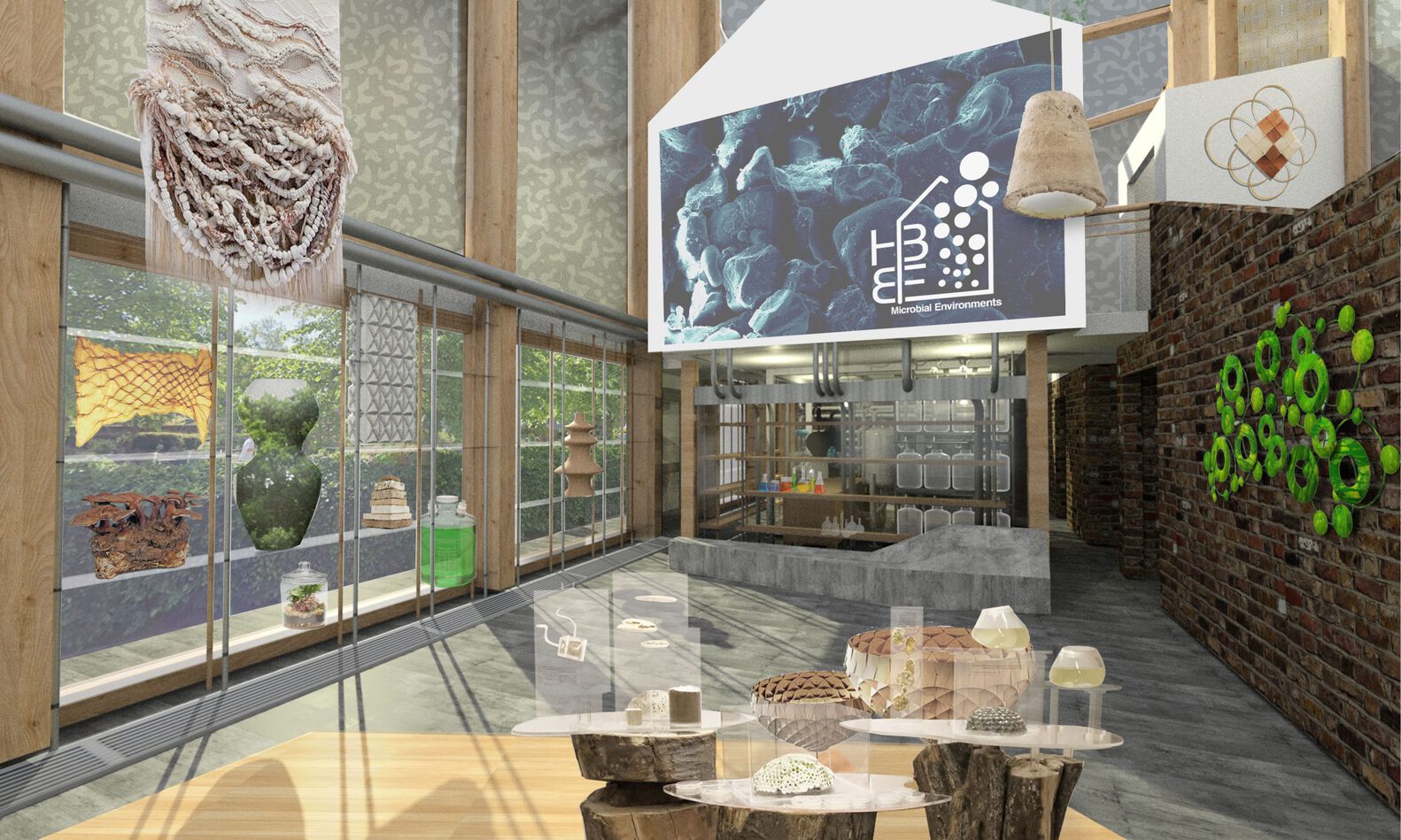
The OME is an experimental building where biotechnologies can be tested. Image © Assia Stefanova
The Integrated Design Research Lab at the University of North Carolina Charlotte developed an adaptable microalgae façade system that improves indoor air quality and produces renewable energy through integrated photobioreactors. With the Biochromic Window, the air is introduced within the façade system, and the oxygen produced by the algae is introduced into the HVAC system of the building. Fresh algae are introduced regularly into the system, and the carbon-loaded ones sink at the bottom and are transferred into a component that converts them into biofuel. The system has been adapted and developed for commercial use.
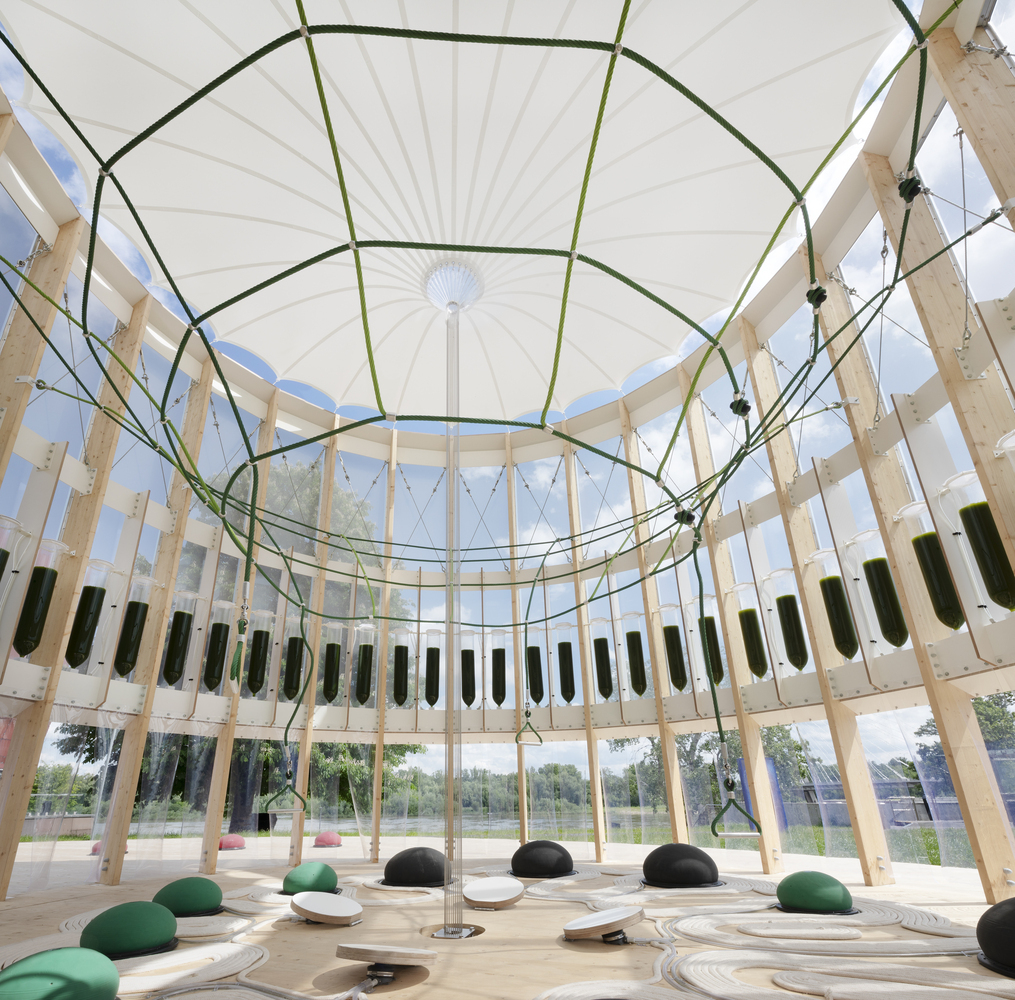
AirBubble Playground by ecoLogicStudio – bioreactors filter the air whithin a playground. Image © Maja Wirkus
These few examples from an expansive research field paint a comprehensive image of what a sustainable construction material industry could look like. Going further, more research is required to evaluate issues such as safety and biocontamination. In addition, these new materials would have to win over public opinion, which is usually reluctant towards the bacterial world. The field of engineered living materials is still in its early days, and there is a long way to go from laboratory research to commercial viability. However, this research opens the path towards a new material world and a new level of sustainability in architecture.
Author: Andreea Cutieru
This article was first published in ArchDaily and is republished with permission.








